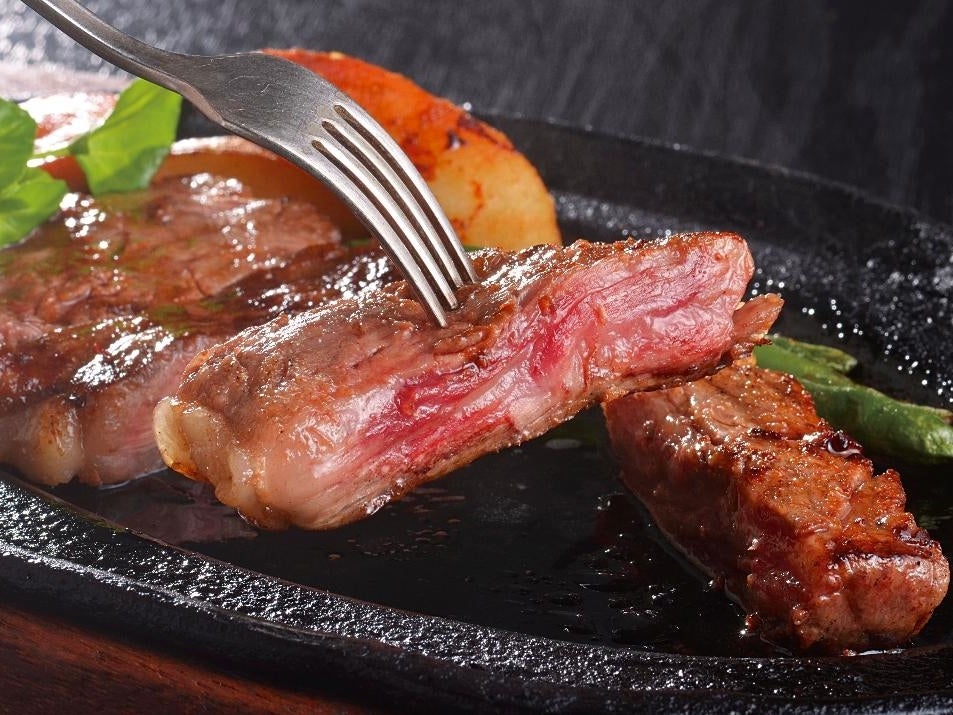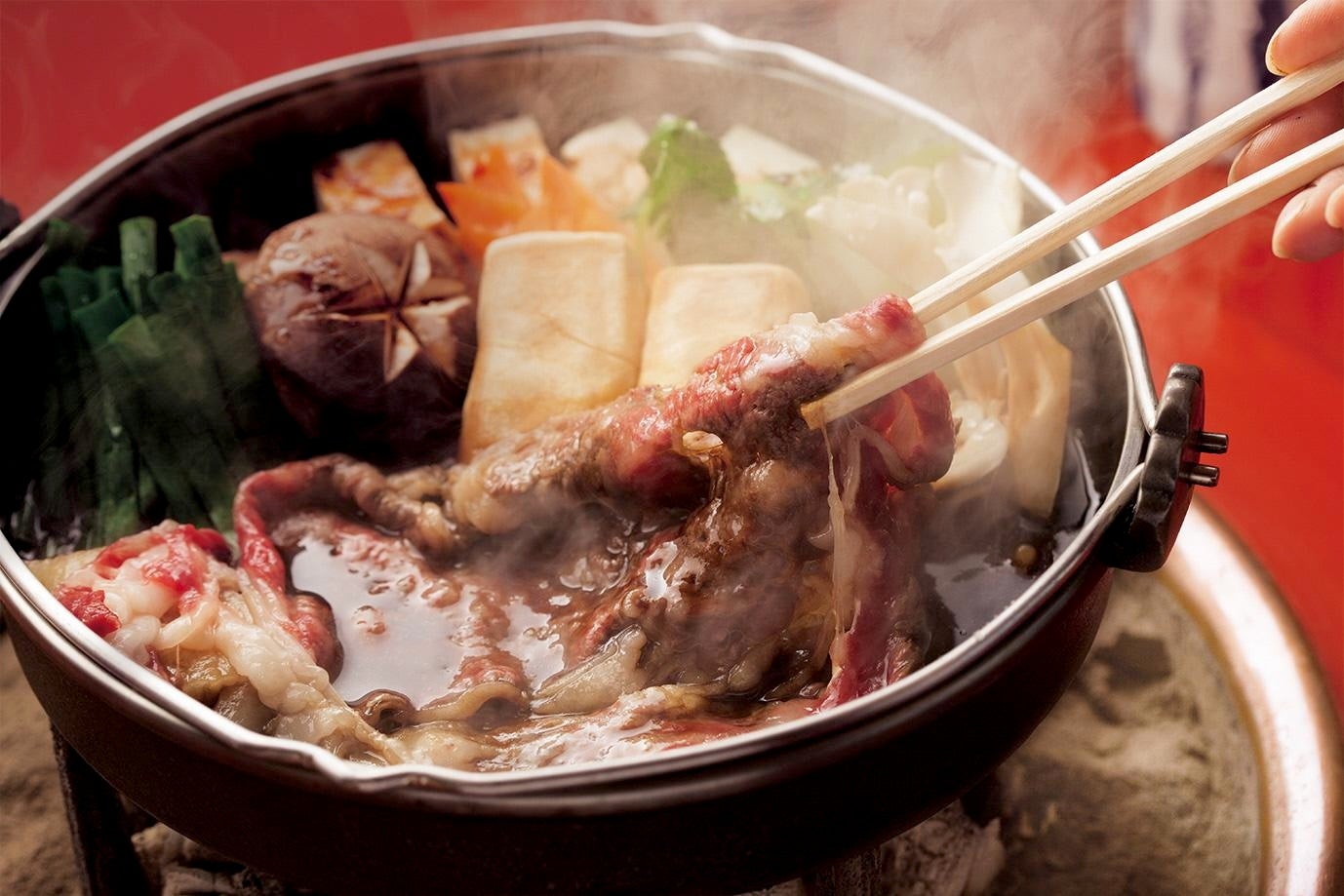Forget kobe beef: On the hunt for Matsusaka wagyu – Japan’s most expensive (and tastiest) steak
Real cow connoisseurs head to Mie prefecture for melt-in-the-mouth meat, says Mark Stratton

In a moment of pure pathos, Mr Tochigi reaches for a framed photograph of his beloved wagyu heifer, called Saori. She is salmon-pink with mottled spidery veins of fat and dressed as a chuck-eye steak.
“I nurtured her for four years and when she was butchered I cried,” says the tearful 86-year-old, clutching the frame tighter.
By way of compensation, his cattle are reared to become Matsusaka wagyu, Japan’s most expensive beef. In 2002 one single cow fetched a beefy 50 million yen (£350,000) at market.
Wagyu connoisseurs outside Japan might purr with familiarity at the mention of kobe beef, but the Japanese keep Matsusaka wagyu and its marbled melt-in-the-mouth qualities all to themselves. I first encountered it during a four-day food tour of Mie prefecture on eastern Honshu island – although it wasn’t exactly love at first bite.
Mie prefecture’s culinary excellence is somewhat hidden in plain sight. Geographically it lies on a rural coastal plain between Osaka, Tokyo, and Kyoto, yet is bypassed by travellers roaming at lightspeed on Shinkansen trains between these gilded cities.
Before even reaching Matsusaka city I’d delighted in local produce that is the essence of Japanese culinary DNA. In Shima I visited a fourth-generation producer of bonito flakes, the ingredient that adds umami oomph to daishi stock. I shucked Pacific Ocean oysters near Toba, letting their briny loveliness ooze down my throat. And among crumpled hills I learned the precise science of green tea preparation at Shinryaku Sabo tearooms. The first sip was a zesty, citrusy punch to my caffeine-adoring solar plexus.

I saw my first Japanese black tajima cow (one of several indigenous breeds that can be reared to become wagyu) at Tochigi’s farm during a morning excursion from Matsusaka City. These millionaire heifers hardly slosh around muddy fields – they are the most pampered of bovines. Black-furred and compact, Tochigi’s latest prodigy is ensconced in her own bijou cowshed, which I view from a distance due to quarantine rules. If Ferrari made tractors, Tochigi could afford one – but his home is humble and he talks of making people happy with the deliciousness of his wagyu, rather than raking in a fistful of yen.
Tochigi rears his heifers for four years before market. Unlike kobe wagyu (produced from bullocks), Matsusaka wagyu is exclusively virgin females. “Females have more fat than males; that’s why they taste better than kobe,” says Tochigi. The endgame is to produce fatty marbling so soft it melts upon the touch of a human finger.
This process involves intensively nurturing the cows via rather whimsical means. Tochigi feeds his heifers with corn and soya beans; hand massages them with schochu spirit to promote better blood circulation; quenches their thirst with bottled beer (a “beer munchies” approach to fostering appetite); and weeps when they exit stage left to one of the several venerable wagyu restaurants in Matsusaka city that draw savants from all over Japan.

He recommends I first try it in the classical form of sukiyaki, which I do via a cookery class in Matsusaka with private chef, Yoshiko Highashimura. She takes me to the local butchers to buy thin cuts of rump and sirloin costing 2,500 yen (£17) per 100g. The more off-white the fatty marbling, the better the taste, says the butcher.
Sukiyaki takes a minute to prepare. Add meat to a medium-heat skillet, simmer in its own fat and liberally sprinkle sugar and a dash of soy. While the Japanese participants around me hum an epiphany, I find it too sweet (told you it wasn’t love at first bite). When it’s my turn to cook, I add less sugar and allow the wagyu’s silky natural tenderness to speak for itself. It’s so soft I can pull it apart with chopsticks.

“Ha! English sukiyaki,” observes Highashimura, politely tasting my effort as we exchange bows.
Several other ways exist for visitors to experience this hallowed meat. For lunch there’s Restaurant Sushiman, run by fourth-generation owner Suichuro Kondo, where traditional seafood sushi is prepared at the counter alongside a jack-in-the-box surprise of wagyu sushi. Dabbed with wasabi, this first bite-sized morsel sets off a velvety firework of juices in my mouth. It’s so buttery soft I order another despite each piece costing 900 yen (£6.30).
“So many Japanese visitors came looking for wagyu that we put it on the menu as sushi 40 years ago,” says Kondo.

You won’t, however, better Restaurant Gyugin, established in 1902. In one of Matsusaka’s original wagyu establishments, guests dine in private rooms cross-legged on tatami mats behind paper shoji sliding-screens, served by waitresses dressed in kimono.
Another fourth-generation owner, Mr Kobayashi, gets his meat from Tochigi. “I have travelled across Japan and never eaten better beef,” he says. I press him on how much he outlays for Matsusaka wagyu: “Around 5 million yen per cow and we sometimes buy four cows per month,” he admits. Which by my rudimentary maths is an eye-watering annual outlay of up to £1.69m.

Mind you, Kobayashi claws it back with a three-slice beef course costing £121. Is it worth it? Well, the first medium-rare slither, grilled yakiniku-style on a charcoal burner at my table, is dressed with grains of salt that harmonise with the soft creaminess of texture and subtle charring. The second is divinely fruity, accompanied by yuzu and ponsu dipping sauces. The third slice is naked and I consume it in several salivating bites, rolling my eyes skywards at the tender, melting savouriness of Matsusaka wagyu wonderment.
Priceless.
Travel essentials
Getting there
Japan Airlines flies from London Heathrow to Nagoya via Tokyo for £535 return.
Visiting there
A cookery class at Utsukushiya costs 5,000 yen pp (£34pp).
Join our commenting forum
Join thought-provoking conversations, follow other Independent readers and see their replies
Comments
Bookmark popover
Removed from bookmarks